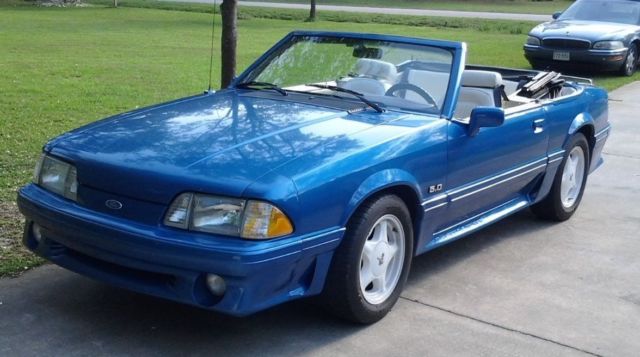

- 1989 FORD MUSTANG BODY KIT MANUALS
- 1989 FORD MUSTANG BODY KIT UPDATE
- 1989 FORD MUSTANG BODY KIT WINDOWS
Mustang and upgraded engine air sensors (speed density computer system was replaced with a mass air system) for all models were the only other “significant” updates for 1989.

1989 FORD MUSTANG BODY KIT WINDOWS
Among the few changes for 1989 was that power windows were made standard on convertibles and adjustable front seats were added for the LX-model. Gone was the old federally mandated 85 mph speedometer, replaced with a fitting 140 mph speedo, from the GT. The interior again remained the same, save for one change. The exterior remained virtually unchanged for the 89 Mustang, with Ford being content to sell what was a still very popular package. In 1989 Ford did not want to mess with a good thing so they kept things pretty much the same, with almost no updates for the 1989 model year.
1989 FORD MUSTANG BODY KIT UPDATE
The big update in 1987 made a big difference to sales and credibility and it helped the Mustang earn back its street cred amongst performance enthusiasts. The Mustang model was doing well in the late ’80s.
1989 FORD MUSTANG BODY KIT MANUALS
After being optional equipment on late model GTs from 1982-1988, T-tops were no longer on the options list in 1989.$9,050 (Base Coupe), $9,556 (Base Hatchback), $14,140 (Convertible)Īdditional 1989 Mustang Research: 1989 Research Center / Colors Details / Production Numbers / Prices & Options / Sales Brochures / Owner Manuals / Maintenance / Pictures / Videos / VIN Decoder / Special Editions Background & Details Good looking optional leather articulated sport seats featuring white and red, white and blue, or white and grey leather (convertibles only) remained on the 1989 option list along with power locks and windows, speed control, dual remote mirrors, air conditioning, sunroof, rear defrost and electronic AM/FM stereo with cassette. Carryover interior trim colors were: Scarlet Red, Medium Grey and Beige. Standard interior features remained the same from 1987: tilt wheel, 7,000 rpm tach, swiveling map light, interval wipers, reminder lights for low fuel, low washer fluid, low coolant and “check oil”, center console, articulated sports seats, driver’s foot rest/ support and brake and accelerator pedals positioned to allow heel-and -toe downshifting. Otherwise, the ergonomic GT design continued with dash, instrument panel, climate control knobs, seats, door trim and console from ‘87 and ‘88. The big interior news for 1989 was a new 140 mph speedometer now standard on all 5.0L models replacing the wimpy 85 mph speedo in earlier models (the 140 mph speedo was introduced partway through the 1989 model year after the existing stock of 85 mph speedos were used up). In addition, a small camshaft profile change to reduce valvetrain noise actually reduced 5.0L output by three horsepower in 1989 (this also was not reflected in the total horsepower rating). (This change actually reduced output by two or three power because of the more restrictive air inlet tract, but was not reflected in the total horsepower rating).

Speed density 5.0Ls are not nearly as adaptable to modification as their mass air-equipped counterparts. Although in stock form the speed density 5.0Ls have proven to be a bit faster than the mass airflow sensor cars, GT enthusiasts planning to modify their GT’s were glad to have the mass air system which allows extensive performance modifications to be made while still retaining driveability. One major mechanical revision did happen in 1989 - 5.0Ls in all 50 states were switched over to mass airflow sensor metering which replaced the speed density system found on all GT’s in 1988 (except those sold in California which had already switched).


 0 kommentar(er)
0 kommentar(er)
